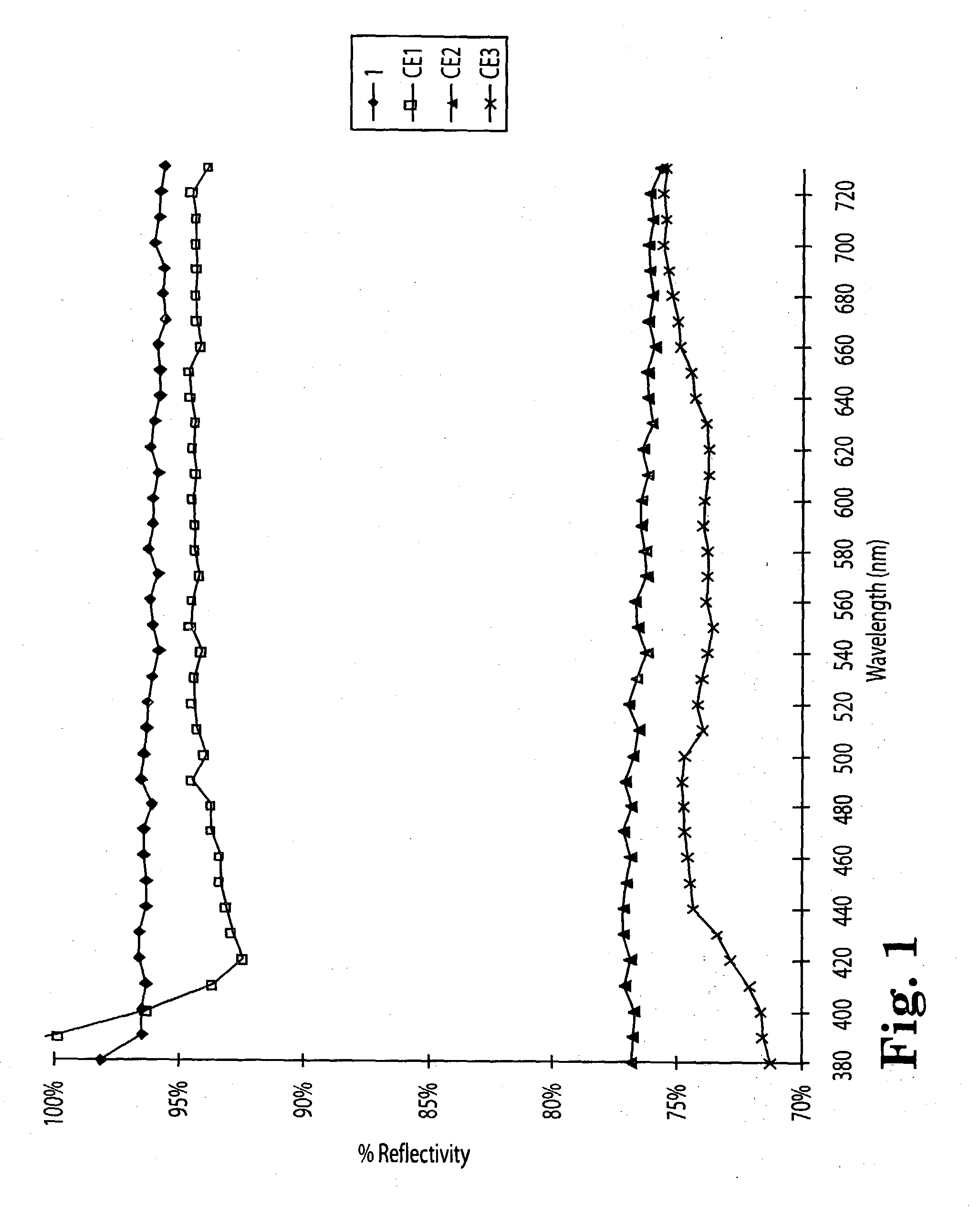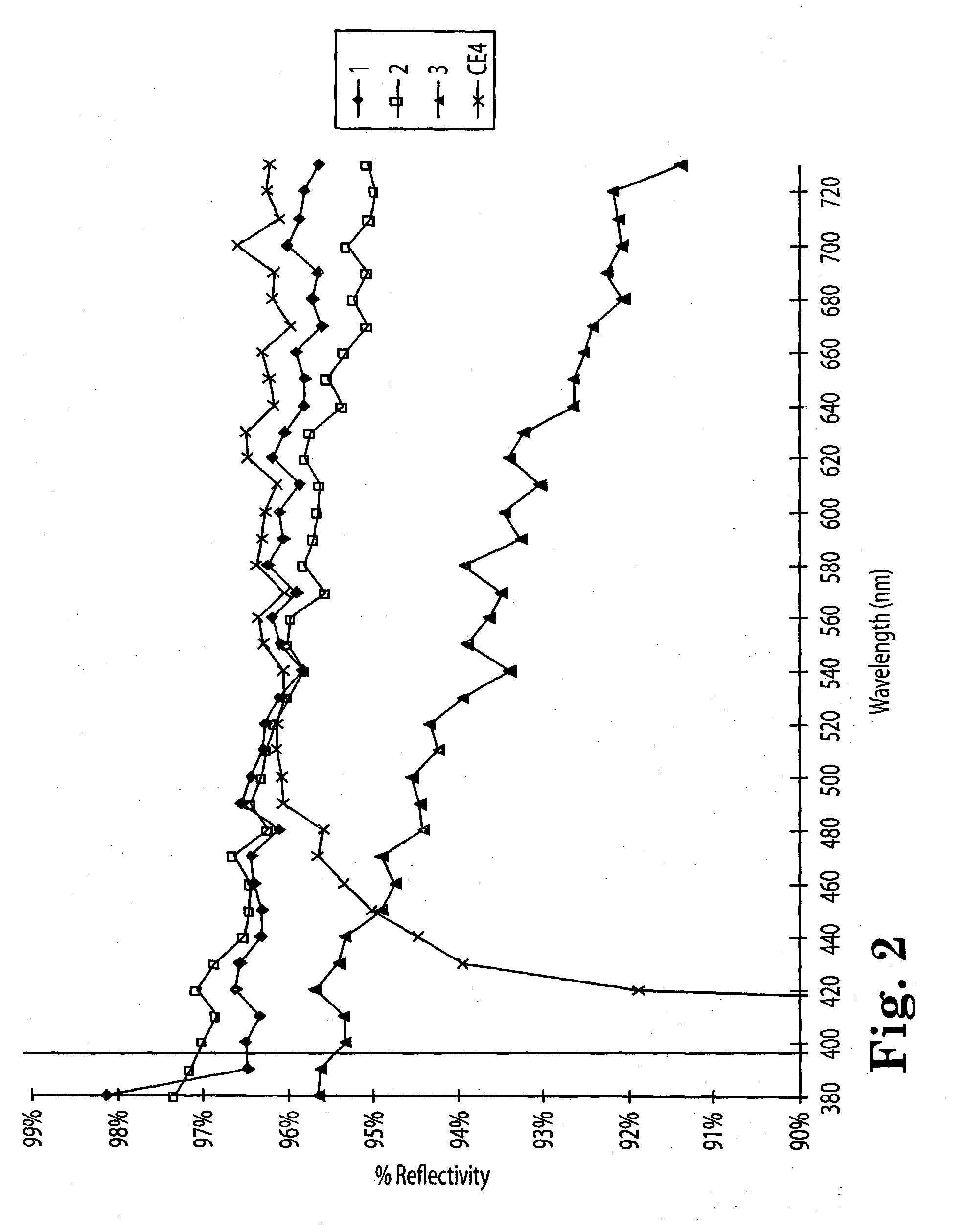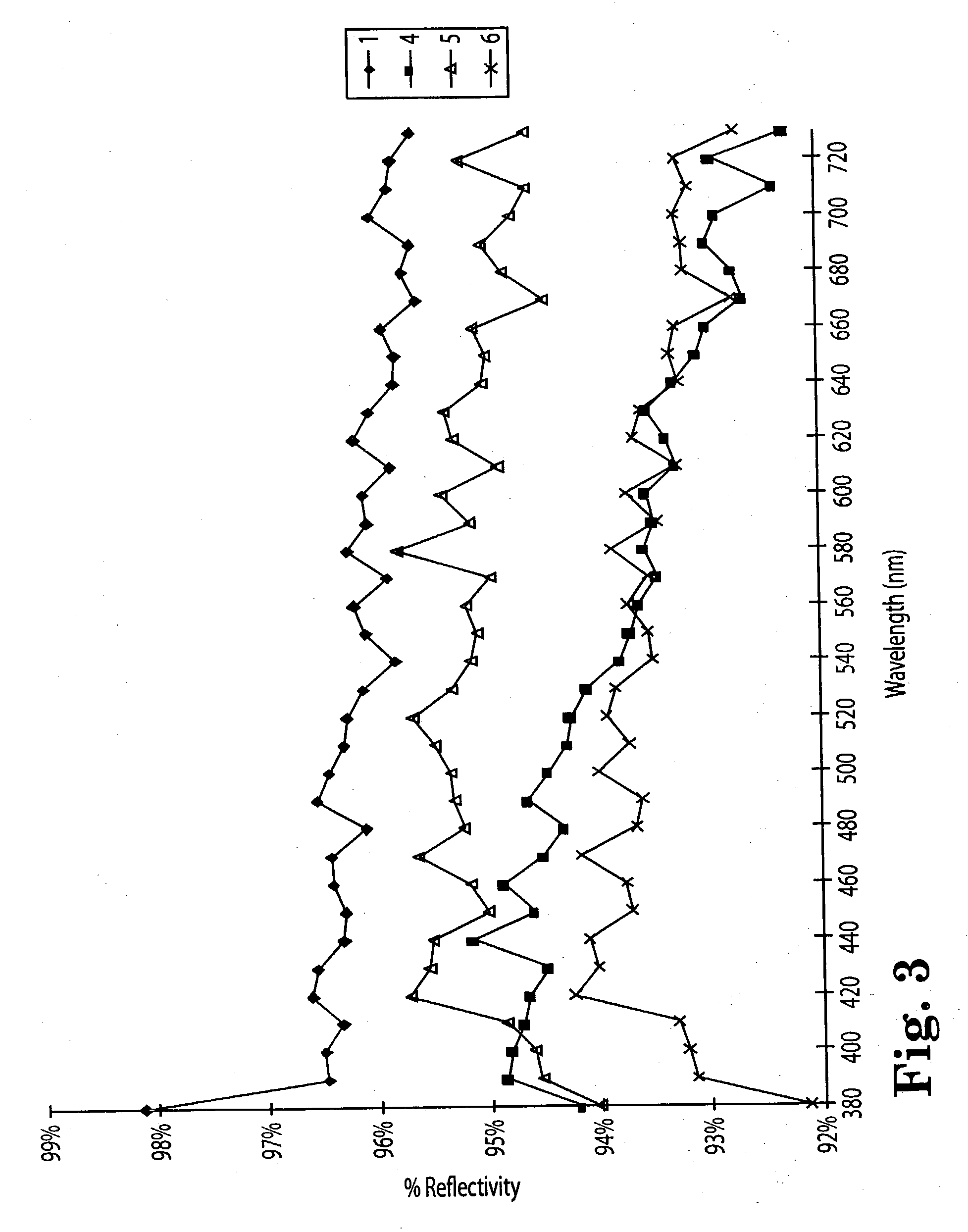Diffuse reflective articles
a reflective article and diffuser technology, applied in the field of diffuse reflective articles, can solve the problems of many tests being inaccurate in measuring absolute absolutes, prohibitively large overall thickness required to diffusely reflect most of the light,
- Summary
- Abstract
- Description
- Claims
- Application Information
AI Technical Summary
Benefits of technology
Problems solved by technology
Method used
Image
Examples
example 1
[0110] Example 1 and Comparative Examples 1-3 were tested for their reflectance spectra by method 1 which are shown in FIG. 1. The spectra for Comparative Example 2 was taken of a region that approximated a thickness closer to 150 .mu.m. The reflectivity of better than all the comparative examples across most of the visible light spectrum.
examples 2 and 3
[0114] Examples 2 and 3 and Comparative Example 4 were tested for their reflectance spectra which are shown in FIG. 2 together with that of Example 1. The thickest inventive reflector (Example 1) was more reflective than Comparative Example 4 until about 530 nm visible light wavelength, but was slightly less reflective than CE4 at higher wavelengths. Comparative Example 4 was also less reflective than inventive Examples 1 and 2 until about 520 nm wavelength and was less than 3% more reflective at 550 nm than Example 3, a film having a significantly lower processing cost.
examples 4-6
[0115] The effect of diluent extraction was demonstrated on various microporous film constructions.
[0116] Example 4 was prepared in a manner similar to Example 1 except that the casting wheel speed was increased to provide a construction with a thickness of about 205 .mu.m (8 mil) and the washing time and drying time was decreased proportionately.
[0117] Examples 5 and 6 were made using the same polymer and diluent as Example 1. The two materials were introduced into the extruder to provide a composition of 50% by weight of the polymer and 50% by weight mineral oil The nucleating agent was provided at 750 ppm and 1000 ppm, respectively. The overall feed rate was 20.5 kg / hr. The polymer was heated to 271.degree. C. in the extruder to melt and, after mixing with the oil, the temperature was maintained at 177.degree. C. during the extrusion. The melt was extruded through a 30.5 cm-wide coat hanger slit die and cast as a transparent film onto a casting wheel maintained at 66.degree. C. a...
PUM
| Property | Measurement | Unit |
|---|---|---|
| reflectivity | aaaaa | aaaaa |
| wavelength | aaaaa | aaaaa |
| wavelength | aaaaa | aaaaa |
Abstract
Description
Claims
Application Information
 Login to View More
Login to View More - R&D
- Intellectual Property
- Life Sciences
- Materials
- Tech Scout
- Unparalleled Data Quality
- Higher Quality Content
- 60% Fewer Hallucinations
Browse by: Latest US Patents, China's latest patents, Technical Efficacy Thesaurus, Application Domain, Technology Topic, Popular Technical Reports.
© 2025 PatSnap. All rights reserved.Legal|Privacy policy|Modern Slavery Act Transparency Statement|Sitemap|About US| Contact US: help@patsnap.com



